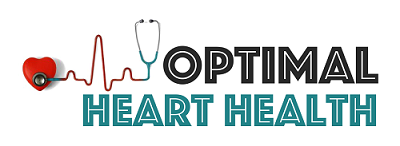Circumcision, a surgical procedure that removes the foreskin from the tip of the penis, is commonly performed for various reasons, including religious, cultural, and medical purposes. While this practice has deep historical roots, its medical applications are continually evolving, making it essential for individuals to understand the procedure, potential benefits, associated risks, and the recovery process. Consulting a qualified healthcare professional can help in making an informed decision based on personal, cultural, or medical preferences.
Understanding the Circumcision Procedure
Circumcision typically involves the removal of the foreskin by a qualified healthcare professional, often a physician with specialized training. The procedure can vary slightly depending on age and specific medical circumstances. In infants, it usually takes only a few minutes under local anesthesia, while circumcision in older children or adults is more complex, often requiring general or regional anesthesia and a longer recovery period.
The surgery begins with cleaning and sterilizing the area, followed by administering anesthesia. Once numb, the healthcare provider carefully removes the foreskin and stitches the remaining skin, if necessary, to aid healing. The procedure is generally quick and can be done in a medical setting like a hospital or clinic.
Benefits of Circumcision
Circumcision offers potential health benefits, particularly when it comes to hygiene and reducing the risk of certain infections. Although the procedure is not necessary for everyone, it can contribute to certain long-term health advantages, especially in areas with limited access to healthcare and sanitary facilities.
- Improved Hygiene: Without the foreskin, maintaining cleanliness around the head of the penis is easier. This can reduce the risk of infections or inflammatory conditions like balanitis, which is common in men who may find it difficult to thoroughly clean the area under the foreskin.
- Lower Risk of Urinary Tract Infections (UTIs): Studies have shown that circumcised males, particularly in infancy, may have a reduced risk of urinary tract infections. UTIs in males are less common than in females, but they can lead to complications if they recur or are untreated.
- Reduced Risk of Sexually Transmitted Infections (STIs): Some research suggests that circumcised men may have a slightly lower risk of contracting certain STIs, including HIV. This benefit is most significant in areas with higher prevalence rates and in cases where protective health measures may be limited.
- Decreased Risk of Penile Cancer: Although rare, penile cancer risk may be lower in circumcised men, potentially due to improved hygiene and reduced chronic infections. This link is still under study, but the reduced risk is an added consideration for some individuals.
Risks and Complications
As with any surgical procedure, circumcision involves some risks, though complications are rare when performed by a qualified healthcare professional. Understanding these risks can help individuals make a more informed choice about the procedure.
- Pain and Discomfort: While anesthesia reduces pain during the procedure, some discomfort may persist during recovery. Over-the-counter pain relief can be used to alleviate minor pain or soreness post-surgery.
- Infection: Infection at the incision site is a potential complication, although it is rare when proper post-operative care is observed. A qualified healthcare professional will usually provide guidelines for wound care and hygiene to help prevent infection.
- Bleeding: Minor bleeding is typical, but excessive bleeding is uncommon. In infants, careful observation post-surgery ensures that any abnormal bleeding is quickly addressed. Older patients may experience slightly more bleeding during recovery, which is usually managed with standard post-operative care.
- Adhesions or Scarring: Occasionally, scarring may occur around the surgical site, or the remaining foreskin may stick to the head of the penis, requiring minor follow-up treatment. This risk is more common in infants and young children.
The Recovery Process
Recovery from circumcision varies depending on age and the extent of the surgery, with infants generally healing faster than adults. Following the guidance of a qualified healthcare professional can facilitate a smoother healing process and reduce the likelihood of complications.
- Infant Recovery: Infants usually recover within 7-10 days, during which the surgical site may appear red and swollen. Most infants experience minimal pain and are usually back to normal activities quickly. Applying a protective ointment and ensuring the diaper area remains clean can aid healing.
- Child and Adult Recovery: For older children and adults, full recovery can take several weeks. The surgical site may be tender, and physical activity should be limited to avoid strain on the stitches. Adults may be advised to refrain from sexual activity for four to six weeks to allow complete healing.
- Caring for the Surgical Site: Whether the patient is an infant or an adult, keeping the area clean and dry is essential. Regular cleaning with mild soap and water, avoiding abrasive movements, and following specific instructions from a qualified healthcare professional will aid healing. Pain management can include prescribed medication or over-the-counter pain relievers as recommended by the healthcare provider.
Consulting a Qualified Healthcare Professional
The decision to undergo circumcision is a personal one and can be influenced by religious, cultural, or medical factors. Consulting a qualified healthcare professional is crucial in weighing these considerations and understanding both the immediate and long-term impacts of the procedure. For parents considering circumcision for their child or for adults evaluating the procedure for themselves, discussing concerns, potential benefits, and risks with a healthcare provider can provide clarity.
Circumcision continues to be a topic of debate in medical, cultural, and social contexts. However, with the support of a qualified healthcare professional, individuals can make an informed choice that aligns with their values and health goals, ensuring that they fully understand the procedure, recovery expectations, and health implications.


